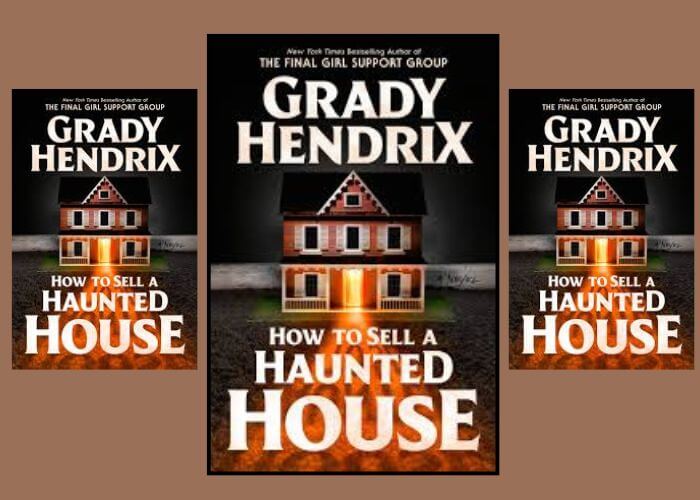Blog
How to Sell a Haunted House by Grady Hendrix Book Review

Opening Hook
Picture this: you’ve just inherited your childhood home after the unexpected death of your parents, and now you’re faced with the daunting task of sorting through decades of memories while trying to sell your house. For many, this scenario represents one of life’s most emotionally challenging experiences. Grady Hendrix’s latest horror novel takes this universally relatable situation and transforms it into a spine-tingling exploration of family trauma and supernatural terror.
“How to Sell a Haunted House” represents a thrilling new novel that explores the way our past can haunt us more effectively than any ghost. This Southern Gothic horror comedy classic from bestselling author Grady Hendrix demonstrates why he’s considered a contemporary horror master, delivering a story that works equally well as a supernatural thriller and an emotionally resonant family drama.
Book Overview
Published by Berkley Books, “How to Sell a Haunted House“ marks another triumph for New York Times bestselling author Grady Hendrix. Known for previous works like “Southern Book Club’s Guide to Slaying Vampires” and “Horrorstor” (about a haunted IKEA), Hendrix has established himself as a leading voice in the horror paperback boom and contemporary horror.
This Grady Hendrix novel falls squarely into the horror comedy genre, though it ventures deeper into family drama territory than some of his previous works. The basic premise follows Louise and Mark Joyner, two siblings who must deal with their family home after their parents’ unexpected deaths. What should be a straightforward process of clearing out the house and putting it on the market becomes complicated when supernatural forces seem determined to prevent the sale.
Plot Summary (Spoiler-Free)
Louise dreads going home to Charleston, where she must confront both her strained relationship with her brother Mark and the overwhelming task of dealing with a house stuffed to the rafters with their parents’ possessions. As someone who doesn’t want to deal with emotional complications, Louise approaches the situation with characteristic practicality, while Mark takes a more sentimental approach to their family legacy.
The haunted house story unfolds as increasingly strange occurrences plague their efforts to prepare the property for sale. Creepy dolls and other childhood toys seem to move on their own, and the house itself appears to resist their attempts at organization. The siblings must navigate not only supernatural manifestations but also their own unresolved grief and family tensions.
Hendrix takes on the haunted house genre with his signature blend of genuine scares and emotional authenticity, creating a narrative that explores how our past can haunt us in ways both literal and metaphorical.
Character Analysis
Louise serves as the story’s anchor, representing the type of person who resents her success being overshadowed by family obligations. Her character embodies the tension between wanting to move forward and being pulled back by familial duty. She’s a final girl figure who must confront not just supernatural threats but her own emotional barriers.
Mark provides a compelling contrast to his sister’s approach, offering a different perspective on family, grief, and the value of preserving memories. Together, Louise and Mark represent different strategies for dealing with loss and family legacy.
The supporting characters, while not as fully developed, serve important functions in highlighting different aspects of grief and family dynamics. Hendrix uses these characters to explore various ways people cope with trauma and change.
Themes and Deeper Meaning
At its core, this horror novel explores the weight of family trauma and how unresolved grief can manifest in our lives. The haunted house becomes a metaphor for the emotional baggage we carry from our childhood and family relationships. Hendrix examines how material possessions can serve as emotional anchors, keeping us tethered to past versions of ourselves.
The book delves into generational patterns and the challenge of breaking cycles of dysfunction. The supernatural elements serve to externalize internal family conflicts, making abstract emotional concepts tangible and immediate.
Horror Elements and Effectiveness
Hendrix demonstrates his skill as a horror master by crafting scares that work on multiple levels. The supernatural elements feel genuinely threatening while also serving the story’s emotional themes. His approach to the haunted house genre brings fresh perspective to familiar territory.
The balance of horror and humor that characterizes Hendrix’s work is particularly effective here. The horror comedy elements never undermine the genuine scares or emotional weight of the family drama. Instead, the humor provides necessary relief and makes the characters more relatable.
Compared to other haunted house narratives, this Grady Hendrix book stands out for its emotional authenticity and contemporary sensibility. The scares feel organic to the story rather than forced, and the supernatural elements enhance rather than overshadow the human drama.
Writing Style and Tone
Hendrix creates a texture that engages readers on multiple levels. His writing style combines accessible prose with genuine emotional depth, making complex family dynamics feel immediate and relatable. The texture that engages the reader emotionally while maintaining the genre’s entertainment value demonstrates Hendrix’s growth as a writer.
The pacing builds tension effectively, allowing both the supernatural and family conflicts to develop naturally. The dialogue feels authentic, capturing the way siblings communicate—or fail to communicate—during stressful situations.
Strengths of the Book
“How to Sell a Haunted House” succeeds brilliantly as both horror entertainment and family drama. The emotional authenticity of the sibling relationship grounds the supernatural elements, while the Charleston setting provides a rich atmosphere for the unfolding drama.
Hendrix’s ability to make the supernatural feel like a natural extension of family dysfunction represents one of his best achievements. The book works whether readers are primarily interested in horror stories or family relationship dynamics.
The creative approach to familiar horror tropes shows Hendrix’s continued evolution as a writer. This feels like classic Hendrix while also pushing into new territory emotionally and thematically.
Areas for Improvement
While the book largely succeeds in its ambitious blend of genres, some readers might find certain supernatural elements less effective than others. The resolution, while emotionally satisfying, might feel too neat for some tastes.
The supporting characters, while functional, could have been developed more fully to enhance the story’s emotional impact. Some plot threads feel underexplored, though this doesn’t significantly detract from the overall reading experience.
Target Audience and Recommendations
This book will particularly appeal to readers who enjoyed Hendrix’s previous works like “The Best Friend’s Exorcism” and “Southern Book Club’s Guide”. Fan of Grady Hendrix will find familiar elements while also discovering new depths to his storytelling.
The book works well for readers who typically avoid horror but enjoy family dramas, as the supernatural elements serve the emotional story rather than overwhelming it. Conversely, horror fans will find genuine scares and creative supernatural concepts.
For the best reading experience, this book rewards attention to emotional subtleties as much as supernatural thrills. It works well as both a quick entertainment read and a more thoughtful exploration of family relationships.
Final Verdict
Rating: 4.5/5 Stars
“How to Sell a Haunted House” represents a significant achievement for Grady Hendrix, successfully balancing horror entertainment with genuine emotional depth. The book succeeds as both a supernatural thriller and a family drama, offering something for readers across genre preferences.
This southern book demonstrates Hendrix’s continued growth as a writer while maintaining the entertaining qualities that have made him a popular author. The memorable characters and creative supernatural elements will stay with readers long after finishing.
The book’s exploration of how we deal with family legacy and personal history gives it relevance beyond its horror genre classification. It’s both a pulse-pounding exercise in pure horror and a thoughtful meditation on family relationships.
Closing Thoughts
“How to Sell a Haunted House” succeeds because it recognizes that the most effective horror often comes from emotional truth. Hendrix has crafted a story that uses supernatural elements to explore universal experiences of family, grief, and the challenge of moving forward while honoring the past.
Want to trust Grady Hendrix with your next reading choice? This book demonstrates exactly why he’s earned that trust. Whether you’re drawn to horror novels for their scares or their emotional insights, this haunted house story delivers on both fronts.
